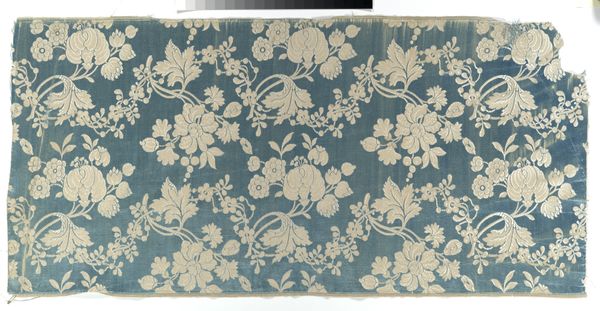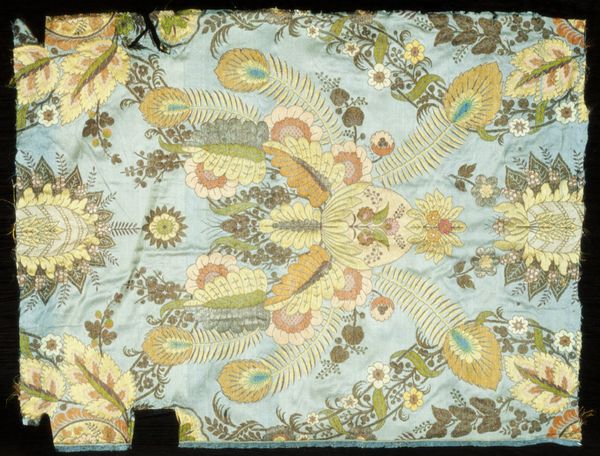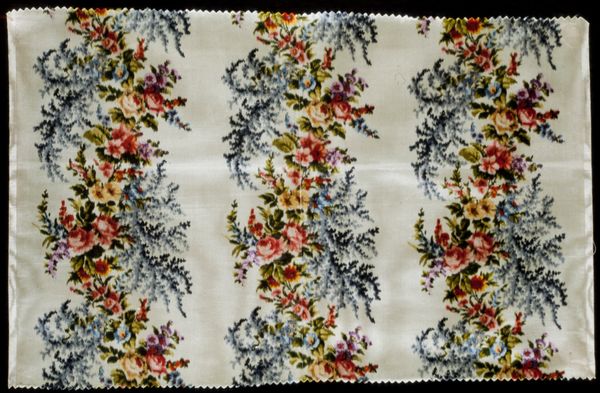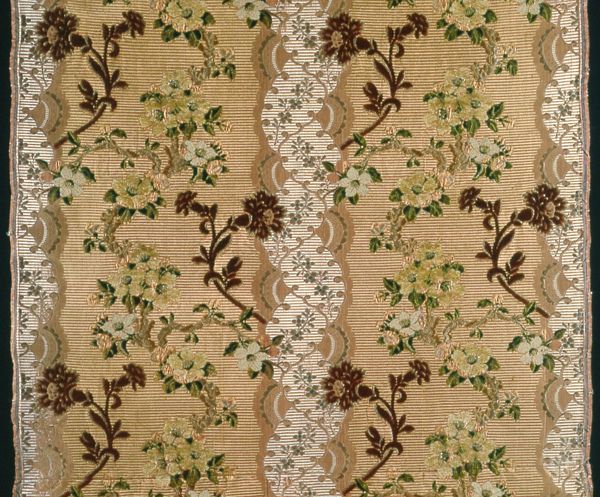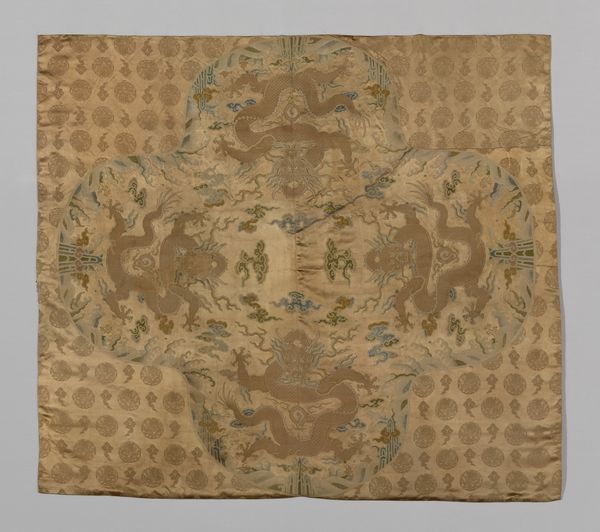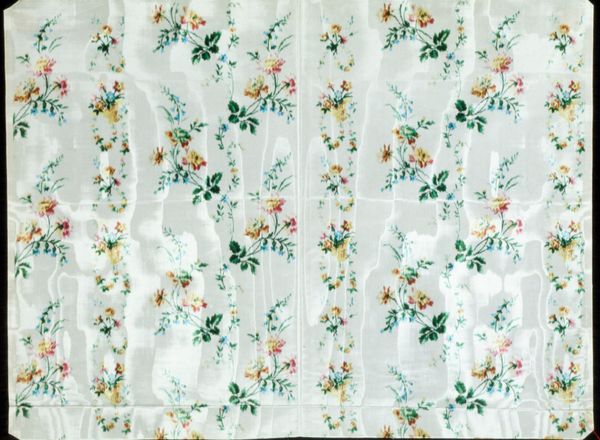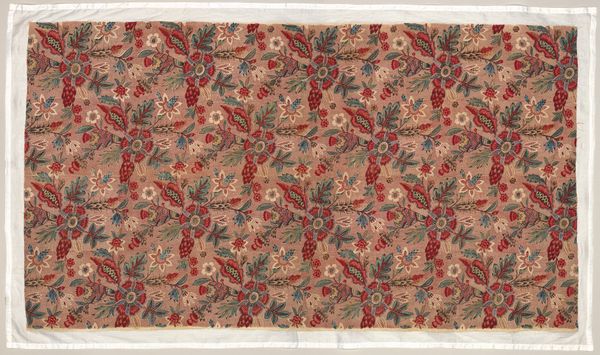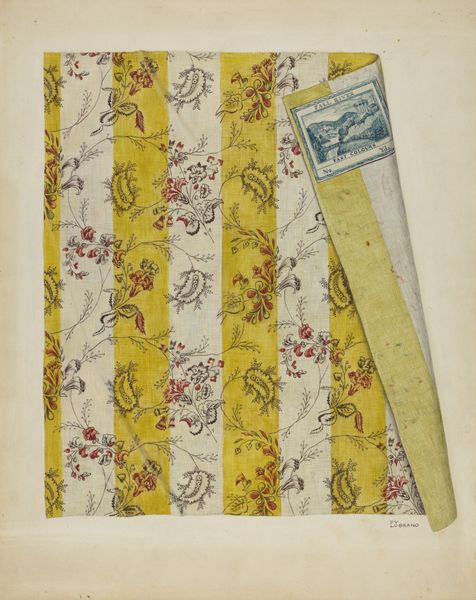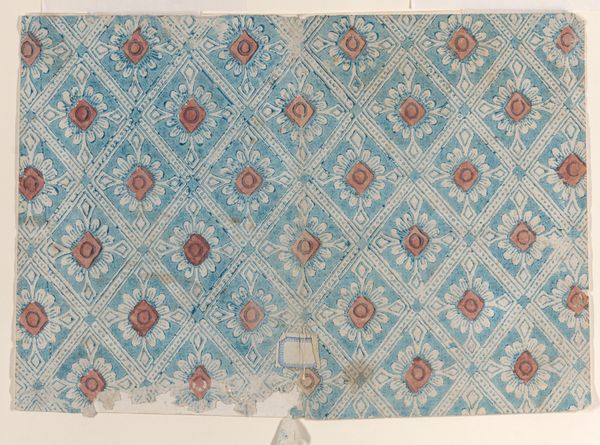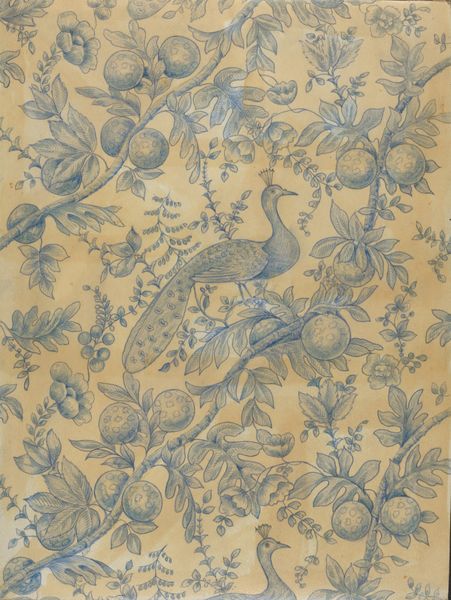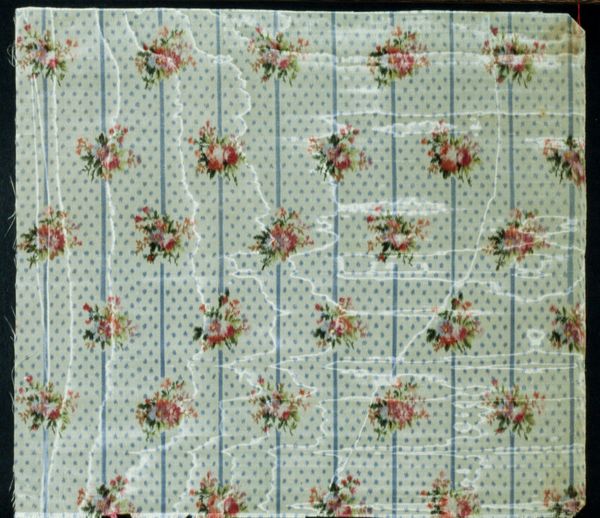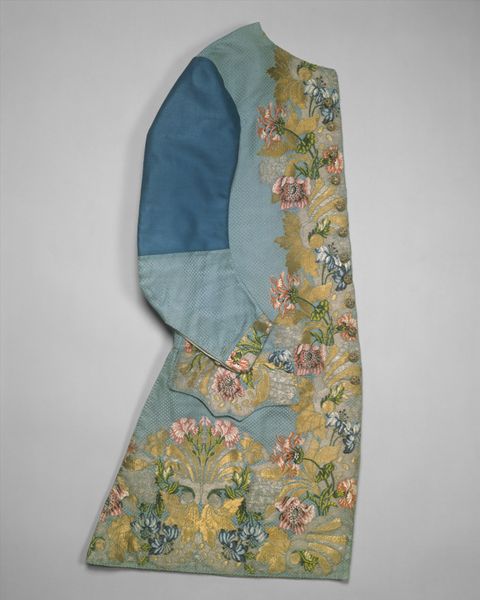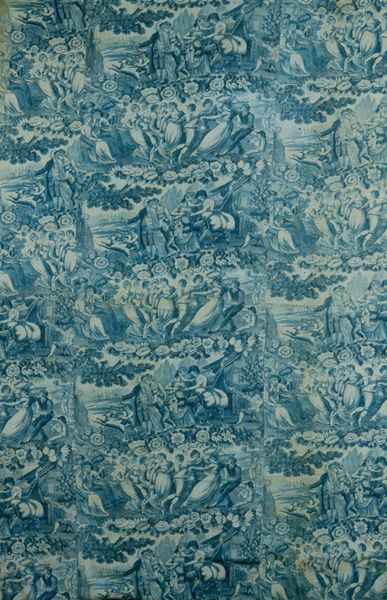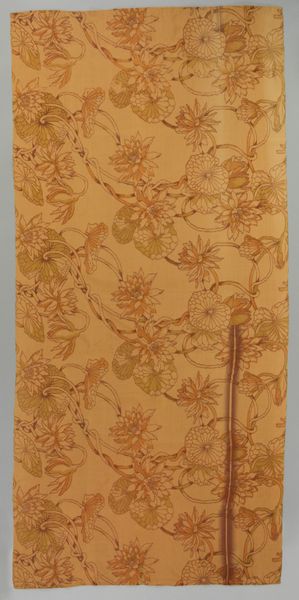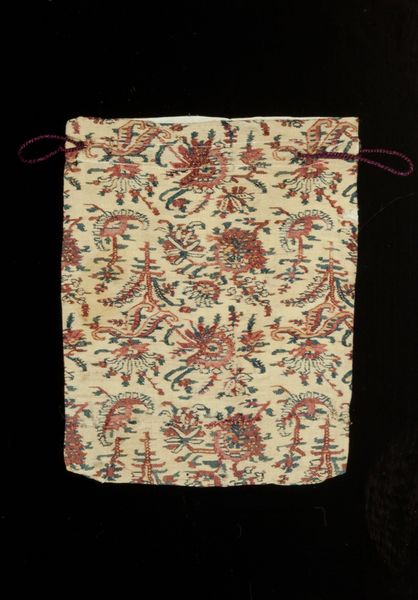
textile, wood
#
portrait
#
interior architecture
#
baroque
#
furniture
#
textile
#
wood
#
interior photography
Dimensions: 50 1/2 x 32 1/2 x 25in. (128.3 x 82.6 x 63.5cm)
Copyright: Public Domain
Editor: Here we have a wing chair, circa 1705. I believe it's made of wood and textile and it really looks like a throne! All those fruits and flowers feel overwhelming. What story do you think this piece has to tell? Curator: For me, it's all about the material realities of its creation and consumption. Look at the details: the imported wood frame, likely harvested through exploitative colonial practices; the intricate needlework, evidence of countless hours of labor, probably from women in the household. Editor: So, you're seeing a commentary on colonialism and labor? Curator: Precisely! This wasn't just some decorative object; it was a statement of wealth, power, and a direct product of complex global trade networks. Think of the social context! Who commissioned it? Who produced its individual components, and how does the chair act as a physical manifestation of unequal class power dynamics? Editor: It’s easy to overlook the human cost embedded in what looks like pretty decor. I wonder about the choice of textile. Curator: Right, consider the textile patterns as visual markers of trade routes and acquired knowledge. Were the flowers depicted local, or exotic species sourced abroad? These details spoke volumes to contemporary consumers. It is consumption and not simply production we must account for when considering these issues. Editor: That totally changes my perspective. I was initially focused on the aesthetic aspect, but now I see how deeply connected this chair is to its social and historical environment, down to each individual fibre and type of wood! Thanks so much. Curator: The point isn't just to analyze a thing, but what went into its making and dissemination. The material traces power itself, doesn’t it?
Comments
No comments
Be the first to comment and join the conversation on the ultimate creative platform.
